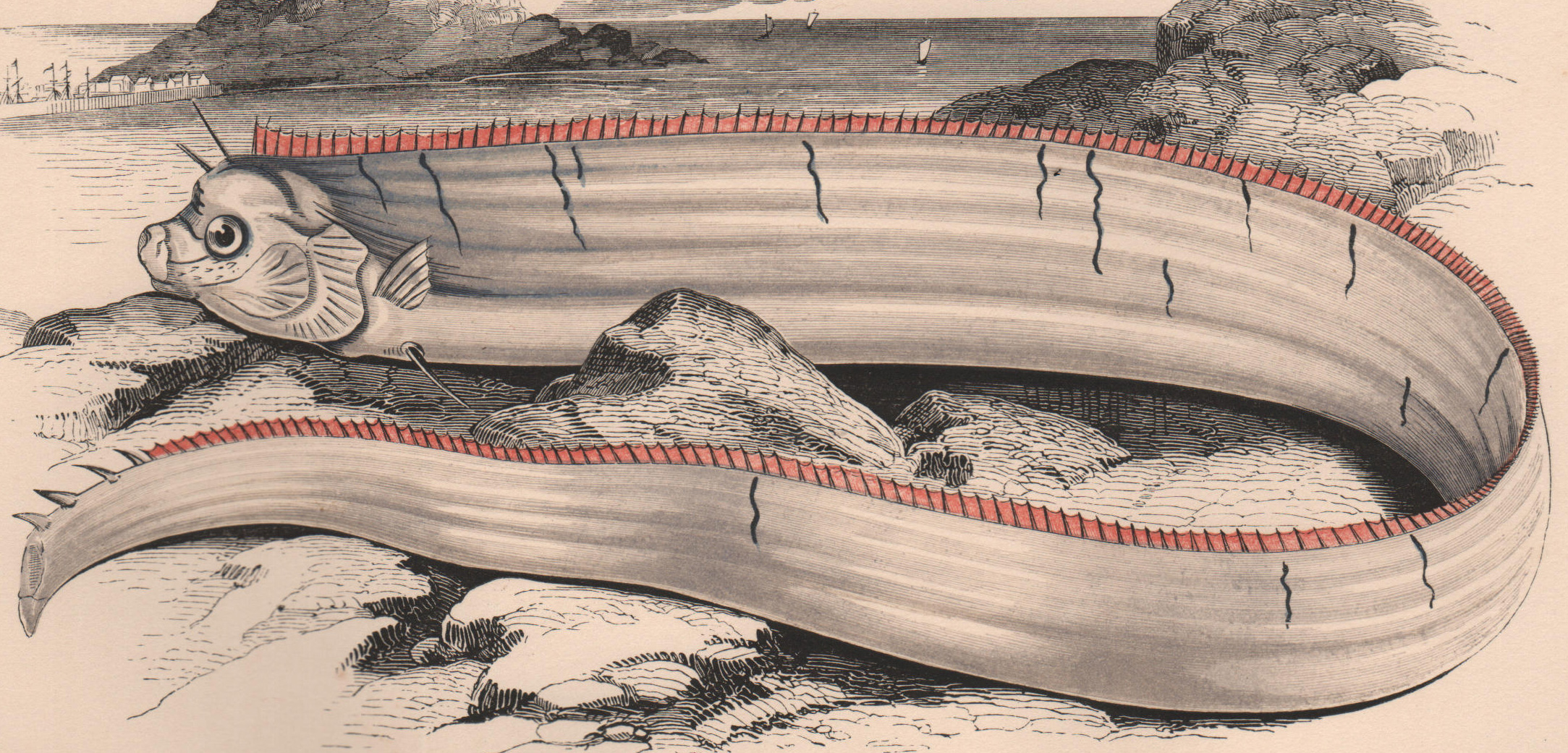The Mystery of the 19th-Century Maine Marine Monster
Before cameras and submersibles were commonplace, scientists had to rely on fishermen for intel on ocean creatures.
Article body copy
Poor S. W. Hanna didn’t realize what he was getting himself into when he told Maine’s Sea-Side Press about his unusual fishing expedition off New Harbor. The day had begun normally enough, but then a dead “marine monster” had the audacity to get stuck in his net. After examining the creature for 10 or 15 minutes, Hanna decided to toss it overboard.
Soon after that fateful day in 1880, Hanna received a letter with a series of questions from J. M. Allen, an enthusiastic scientist from Hartford, Connecticut. After replying—and likely thinking that was the end of that—Hanna was hit by another slew of questions from the scientist, and from the US commissioner of fish and fisheries himself, Spencer Fullerton Baird.
The idea of the most important fisheries scientist in the United States badgering a small-town fisherman for his recollections of a long-dead fish now seems absurd. However, scientists at the time had to rely on such chance encounters to find and identify new species. Without the technology that allows today’s scientists to observe sea creatures in their own environment, any strange sighting by a fisherman warranted attention.
To a modern marine scientist, the Sea-Side Press’s description of the creature—“25 feet [7.6 meters] long” and “shaped like an eel” with a “flat” head—suggests it was an oarfish.

Maine fisherman S. W. Hanna’s sketch of the “sea serpent” he spotted off New Harbor suggests the specimen was actually an oarfish.
The oarfish was already known to 19th-century European scientists, having been taxonomically classified and drawn in detail by the time Hanna caught his strange fish. However, in 19th-century America, the oarfish was overlooked as scientists searched for another elongated sea creature: Scoliophis atlanticus, the sea serpent.
This name was bestowed by naturalists after a number of apparent sightings in Gloucester, Massachusetts, in 1817, and lingered in the scientific nomenclature despite the fact that the existence of the species was soon debunked. Allen’s letters to Hanna capture a phenomenon typical of the 19th century: due to lack of cameras or underwater technology, science could codify myth even as it attempted to dispel it.
Allen’s questions leave little doubt that he had the sea serpent in mind when he sent his letter: “Will you please inform me about its head? Was it like a snake’s head? Did the mouth open like a snake’s mouth? Were there any gills?” He even asked the fisherman to draw the serpent with a pencil.
Hanna not only drew and labeled his marine monster as requested, but answered every question regarding size, shape, color, and appearance. In return, he received two letters from Baird, lamenting that Hanna had not kept the creature’s body and questioning whether the “serpent” was simply a wrongly identified shark.
Hanna’s response assured Baird that he was “a fisherman of 25 years’ experience … acquainted with about every species of fish” in the region and “never saw a fish that resembled that one.” He then provided a lengthy description of every shark the fish was not. Baird thanked Hanna, and the correspondence ended.
Today, a fisherman is more likely to snap a photo before tossing a strange fish overboard, and scientists are more likely to deploy cameras and submersibles than harass fishermen. Still, deep-sea creatures such as the oarfish remain enigmatic. Dead oarfish still make headlines and have been observed alive only a handful of times. While technology has advanced since the days of Hanna, we still have a lot to learn about our underwater neighbors.

